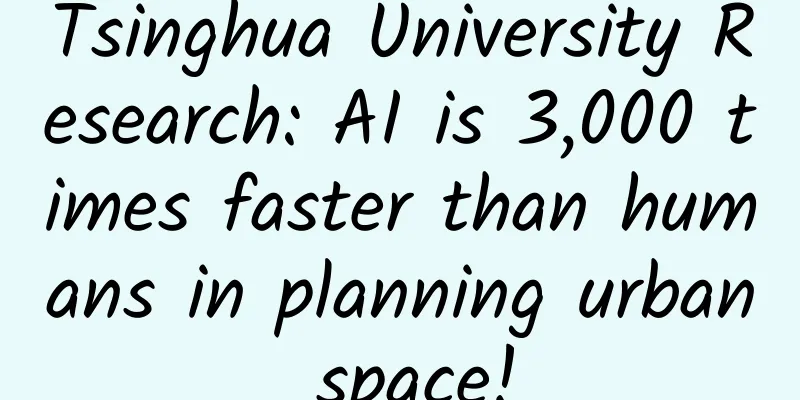The world's first! Chinese scientists reveal details of its birth

|
Scientists reveal details of the creation of a high-precision lunar geological map When I was young, I didn’t know the moon, so I called it a white jade plate. I also thought it was a mirror on the Jade Terrace, flying in the blue sky. Throughout the ages, human beings have never stopped their curiosity and exploration of the moon. At the first Guizhou Science and Technology Festival held from August 5 to 9, Liu Jianzhong, executive editor of the "1:2.5 Million Lunar Digital Geological Series" and researcher at the Institute of Geochemistry, Chinese Academy of Sciences, shared the process of drawing a "portrait" of the moon. In May last year, a team of Chinese scientists announced the completion of the first 1:2.5 million lunar geological map. In February this year, this research was selected as one of the top ten scientific and technological innovation achievements of Guizhou Province in 2022. This is a thumbnail of the lunar geological map at a scale of 1:2.5 million. (Data map) "It took us 10 years to produce this set of high-definition pictures." Liu Jianzhong said that geological maps are different from ordinary maps we come into contact with in daily life, mainly because they express information about geological evolution and can reflect geological processes such as lunar magma, impact events, and volcanic activity. 12,341 impact craters, 81 impact basins, 17 rock types... Flipping through the atlas, in addition to these elements, you can also find the landing site of mankind's first moon landing, the landing site of Chang'e 3, and the "Guanghan Palace" explored by the Yutu lunar rover. "Drawing a high-precision geological map of the entire moon can provide important basic data for lunar scientific research, exploration planning, and landing site selection." Liu Jianzhong said that condensing the moon's billions of years of development and evolution into a single map is an extremely complex system engineering project. As early as 2012, Ouyang Ziyuan, an academician of the Chinese Academy of Sciences, proposed that the Institute of Geochemistry of the Chinese Academy of Sciences take the lead in establishing a scientific research project for the compilation of lunar geological maps. At that time, although lunar exploration activities were in the ascendant at home and abroad, there was a lack of high-precision lunar geological maps, which were either not accurate enough or only covered local areas. This is an intellectually intensive task. Soon after, with the support of the Ministry of Science and Technology, the National Natural Science Foundation of China and the Chinese Academy of Sciences, Jilin University, Shandong University, Chinese Academy of Geological Sciences, China University of Geosciences (Beijing), Institute of Geographic Sciences and Natural Resources Research, Chinese Academy of Sciences and other institutions joined in. This is also a labor-intensive job. Although information technology can be used, because the structural information of the moon is all irregular lines, in order to be more accurate and standardized, most of them can only be drawn manually. In order to make the geological map both scientific and artistic, the team also consulted the Central Academy of Fine Arts on color matching. "We are a large multidisciplinary alliance and collaboration. If we don't bring together these advantageous units, it will be difficult to complete this map." Liu Jianzhong said that although hundreds of researchers were involved, the compilation still took 10 years. Liu Jianzhong introduced that unlike the Earth, which is mainly driven by internal dynamics, the geological evolution of the Moon is characterized by early internal dynamics and later external dynamics. In this regard, the team has conducted a lot of basic research. Different from the "five-point method" of lunar history division commonly used internationally, they constructed a "three universes and six periods" division scheme, objectively depicting the geological evolution history of the Moon. Based on the data from China's Chang'e Project and making full use of other international lunar exploration data and research results, the team finally successfully developed the world's first 1:2.5 million lunar geological map. This is a geological lunar globe used for popular science purposes. (Data map) "The geological lunar sphere based on this achievement has been mass-produced, and a special geological map will be published this year." Liu Jianzhong said that science is endless, and the transformation of these achievements will help people better understand the moon. At present, the team is also working on the compilation of a 1:1 million lunar geological map. Source: Xinhua News Agency Reporter: Xiang Dingjie |
<<: 5 "signals" that tell you that you've eaten too much salt! Pay attention if you're overdosing
Recommend
Written before the release of iOS9: The history of iOS development
Review of iOS Development History <br /> Ju...
Technology News | Guangdong Province achieves “high-speed rail connection between all cities”
【Today’s cover】 Wuyi Mountain in winter is full o...
Clear waves protect the central axis. How did the water system of the central axis evolve?
Beijing is a city with a dense network of rivers ...
Traffic is as valuable as gold. How to take the first step in promoting mutual financial products?
The customer acquisition price of Internet financ...
The fact that you can eat hot pot in such a cold weather is inseparable from the efforts of the brewery
Hot pot and beer may seem like a normal combinati...
Over the years, which "antidotes" in movies and TV shows have fooled you?
This is the 4937th article of Da Yi Xiao Hu The m...
The process from drainage to fission growth
Nowadays, the whole world is experiencing the sta...
Using deep neural networks to solve the problem of NER named entity recognition
This article is organized as follows: What is Nam...
A practical analysis of user growth for educational products!
Starting from the relevant concepts of growth hac...
How to build a user operation system?
However, with the rapid expansion of product scal...
WeChat big update: PC version automatically logs in without mobile phone confirmation and can turn off personalized ads
[[432256]] A few days ago, WeChat launched an upd...
10+ Mobile App Development Tools to Build Apps Faster
Today, the mobile app market is flooded with mill...
Warning: Never put frozen food back into the refrigerator after thawing!
During the Spring Festival holiday, you may have ...
Five UI styles for the second half of 2021, there must be one you like!
It is difficult to innovate in design, and it is ...
Fish has more than 7 seconds of memory! I don’t eat fish, so am I forgetful?
This is the 4837th article of Da Yi Xiao Hu Autho...









